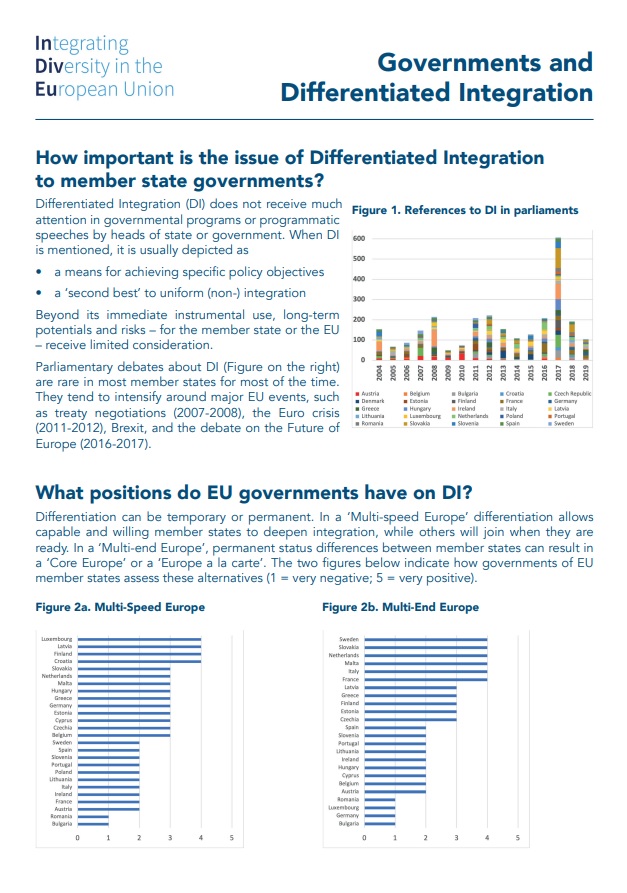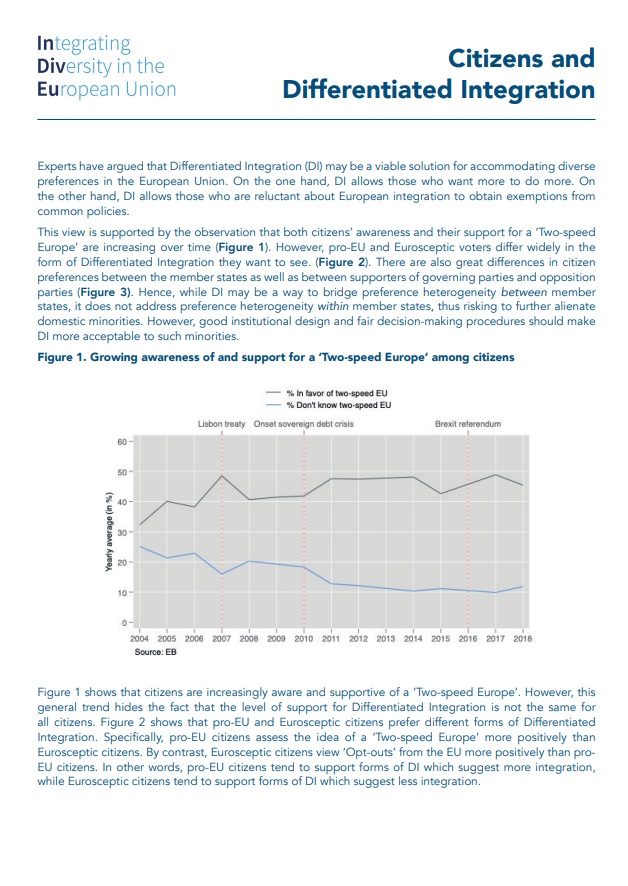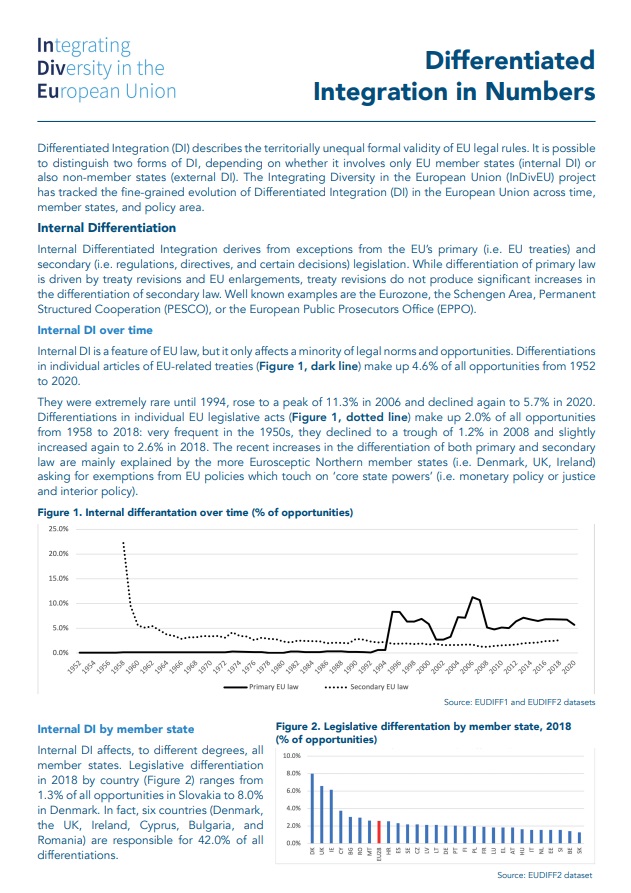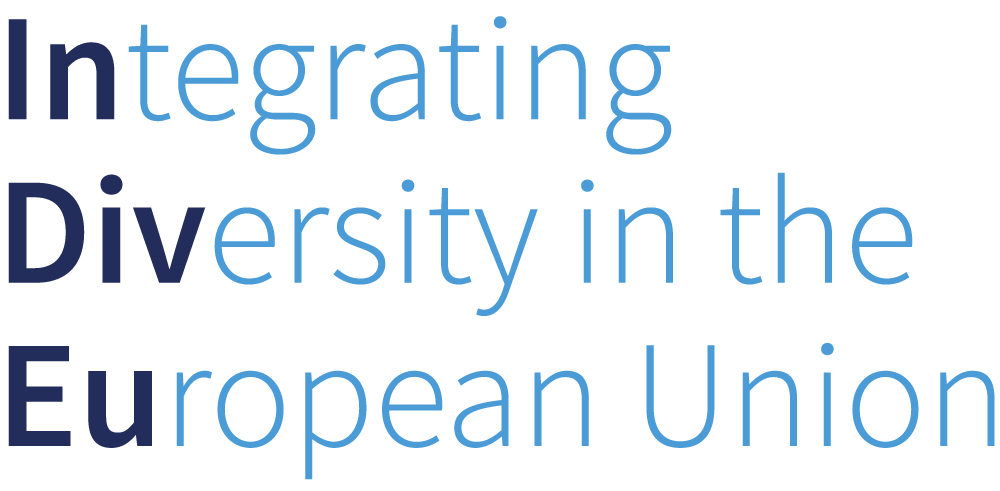This section of the Integrating Diversity in the European Union (InDivEU) website presents three fact sheets developed on the basis of research results from the project.

Governments and Differentiated Integration
How important is the issue of Differentiated Integration
to member state governments?
Differentiated Integration (DI) does not receive much
attention in governmental programs or programmatic
speeches by heads of state or government. When DI
is mentioned, it is usually depicted as
• a means for achieving specific policy objectives
• a ‘second best’ to uniform (non-) integration
Beyond its immediate instrumental use, long-term
potentials and risks – for the member state or the EU
– receive limited consideration.
Parliamentary debates about DI (Figure on the right)
are rare in most member states for most of the time.
They tend to intensify around major EU events, such
as treaty negotiations (2007-2008), the Euro crisis
(2011-2012), Brexit, and the debate on the Future of
Europe (2016-2017)

Citizens and Differentiated Integration
Experts have argued that Differentiated Integration (DI) may be a viable solution for accommodating diverse
preferences in the European Union. On the one hand, DI allows those who want more to do more. On
the other hand, DI allows those who are reluctant about European integration to obtain exemptions from
common policies.
This view is supported by the observation that both citizens’ awareness and their support for a ‘Two-speed
Europe’ are increasing over time (Figure 1). However, pro-EU and Eurosceptic voters differ widely in the
form of Differentiated Integration they want to see. (Figure 2). There are also great differences in citizen
preferences between the member states as well as between supporters of governing parties and opposition
parties (Figure 3).

Differentiated Integration in Numbers
Differentiated Integration (DI) describes the territorially unequal formal validity of EU legal rules. It is possible
to distinguish two forms of DI, depending on whether it involves only EU member states (internal DI) or
also non-member states (external DI). The Integrating Diversity in the European Union (InDivEU) project
has tracked the fine-grained evolution of Differentiated Integration (DI) in the European Union across time,
member states, and policy area.
Internal Differentiation Internal Differentiated Integration derives from exceptions from the EU’s primary (i.e. EU treaties) and secondary (i.e. regulations, directives, and certain decisions) legislation. While differentiation of primary law is driven by treaty revisions and EU enlargements, treaty revisions do not produce significant increases in the differentiation of secondary law. Well known examples are the Eurozone, the Schengen Area, Permanent Structured Cooperation (PESCO), or the European Public Prosecutors Office (EPPO).
